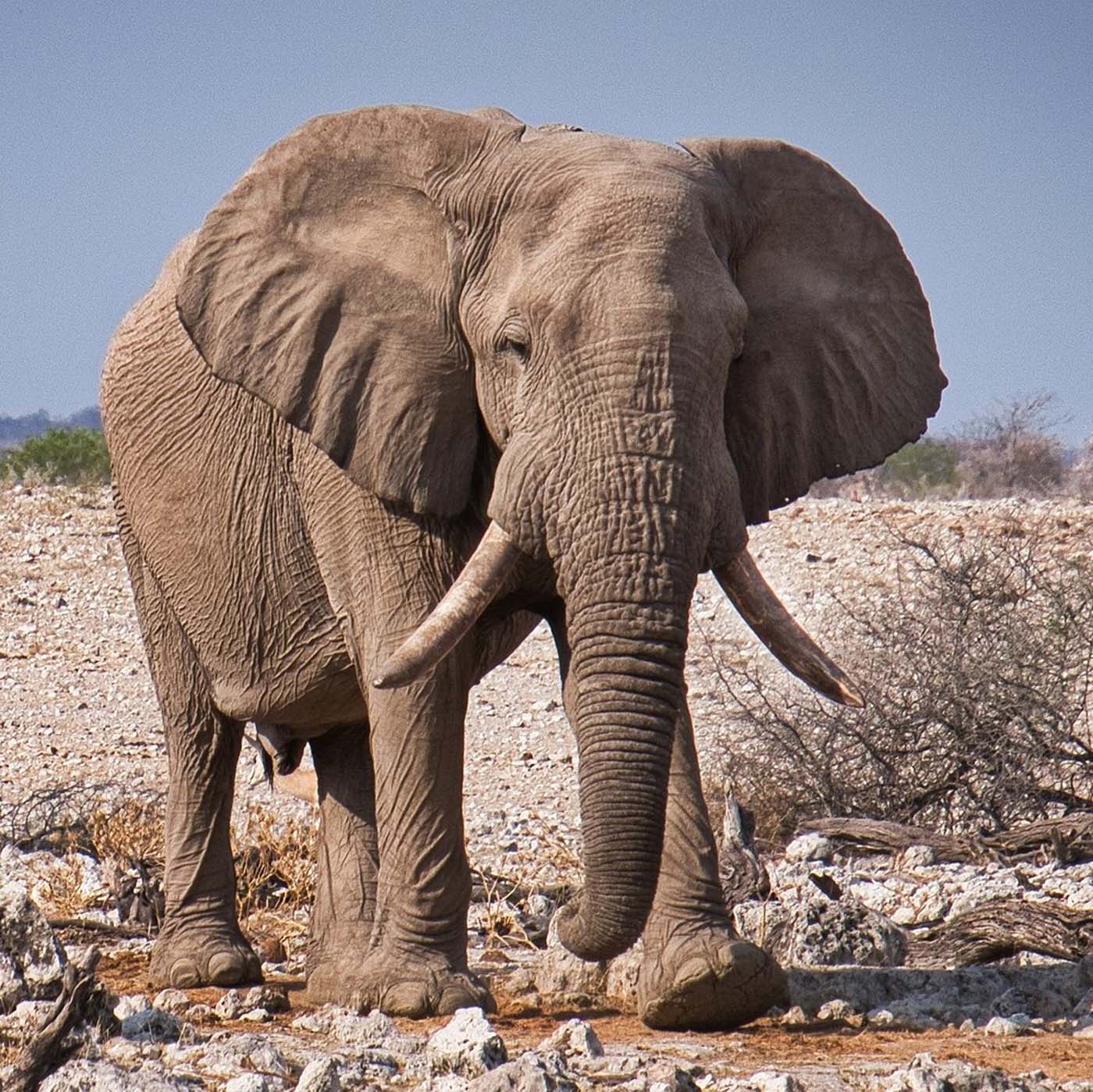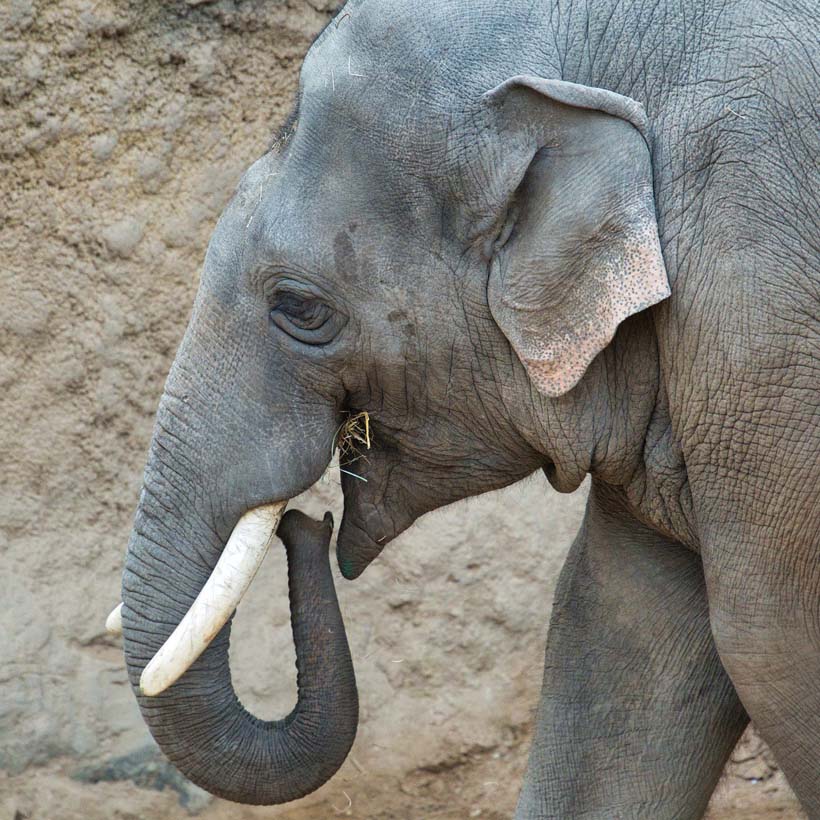HOW MANY SPECIES OF ELEPHANT ARE THERE?
There are three species of elephant – the Asian elephant, the African Savanna elephant (also known as the African Bush elephant) and the African forest elephant. The largest of these species is the African Savanna elephant. African elephants have much larger ears than Asian elephants, and their ears are often compared to the shape of the African continent.
HOW BIG ARE ELEPHANTS?
Elephants are the largest land mammal currently living in the world. Male African elephants have been known to reach up to 4 meters in height and weigh up to 7 tonnes. Females are a lot smaller, but can still fetch up to 3.5 tonnes in weight. A newly born baby elephant weighs around 100kg! That’s more than an average person!
WHAT DO ELEPHANTS EAT?
Elephants are herbivores and live off grass, fruit, tree bark and roots. They need to consume around 70000 calories each day in order to sustain their massive bodies. Consequently, they spend most of the day roaming vast distances in order to find the huge quantities of food and water they need to survive. Over the years, humans have encroached more and more on the areas inhabited by elephants, and so increasingly come into conflict with them. For local farmers, elephants pose a very real problem, as they can easily decimate an entire crop in one night. One of the challenges tackled by elephant conservation programs is to work with farmers and local communities to protect both the crops, and the lives of the elephants.
HOW LONG DOES IT TAKE TO RAISE A BABY ELEPHANT?
Elephants have an incredibly long gestation period of around 22 months. When a calf is born, it is initially blind and recognises its mother through touch, sound and smell. It takes a huge effort to raise a baby elephant; they need around 20 pints of milk a day, and they’re not fully weaned until around 10 years old! Thankfully for the mother elephant, her close-knit family circle chips in and helps to care for the calf.
WHY DO ELEPHANTS HAVE TRUNKS?
Elephants are the only animals on earth to have trunks. These enormous appendages are a combination of a long nose and upper lip. An elephant’s trunk can contain around 40000 muscles giving it incredible strength. To put that in perspective, a person has only 600 muscles in their entire body. Despite its size and strength, an elephant’s trunk can be incredibly dexterous; not only can it move large heavy objects such as logs and branches, but it can also pick up items as small as individual berries. Elephants also use their trunks for drinking, communicating (both through sound and touch) and fighting.
WHY DO ELEPHANTS HAVE TUSKS?
Elephants grow tusks from around the age of two. These tusks are essentially continuously growing incisor teeth. They use their tusks to dig up roots, find water from the ground, and tear off tree bark for food. Males also use their tusks for fighting. Tragically man’s greed for these ivory tusks has had a devastating effect on elephant populations over the past few decades, and all three species are now considered endangered.
ARE ELEPHANTS SMART?
Many scientific studies have shown elephants to be very smart creatures indeed.
They have incredible memories, and can memorise locations of food and water sources over vast areas of land, for very long stretches of time. They can also remember and recognise other individual elephants after years of separation, and recall whether or not they are a friend or a foe.
Elephants have many complex ways of communicating; from sending messages using seismic waves, to signalling via sign language. You can read more about how elephants talk to one another in my How Do Elephants Communicate post.
Elephants are also great problem solvers, and can fashion tools for a range of purposes, such as reaching for food high up in the trees, digging for water, or scratching a hard-to-reach spot! They’ve even been seen plugging water holes with objects, in order to save that precious water for later.
Using tools in this way is something which only the most intelligent creatures are able to do. It shows forethought, as well as an ability to work together to solve a problem.
ARE ELEPHANTS ENDANGERED?
Yes. As of 2021, all three species of elephant are now on the IUCN red list. Asian and African Savannah elephants are classified as endangered, with African Forest Elephants now critically endangered. The main threats to elephant populations are poaching, habitat loss and conflict with people. Elephants are still poached for their ivory tusks, and the expansion of the human population has meant a loss and fragmentation of the elephant’s natural habitat. As a result, elephants often stray onto farm land and damage crops and buildings, resulting in retaliation from the local communities.
Conservation efforts are in a constant struggle to provide safe spaces for elephants to live and roam, to clamp down on the ivory trade, and to forge better relationships between local communities and the native wildlife. You can find out more about how to support elephant conservation projects by visiting The David Shepherd Wildlife Foundation and the WWF.



